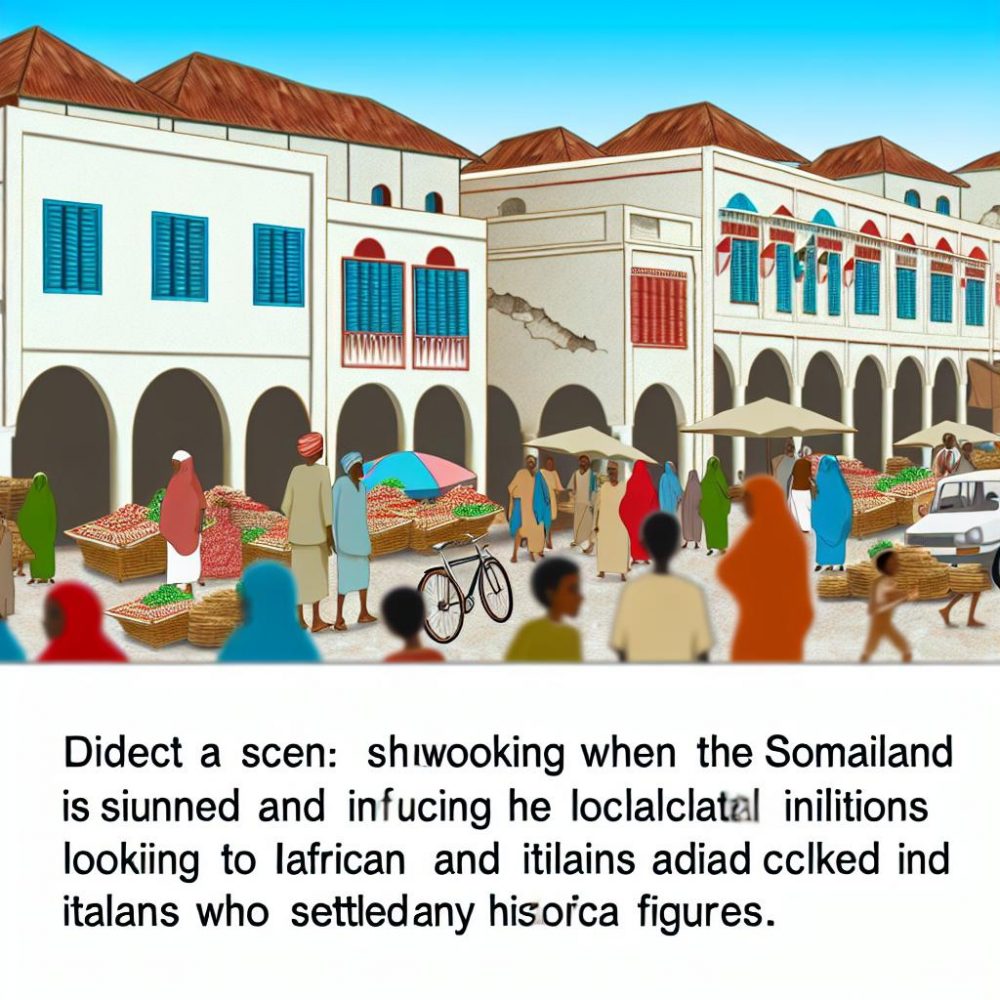
Introduction to Somaliland under Italian Influence
During the period of colonial expansion, numerous European powers scrambled for control and influence over different parts of Africa, including the Horn of Africa. This region, known today as Somaliland, saw its fair share of foreign interest and intervention. Initially, Somaliland was predominantly a British protectorate, but there were instances where Italian influence extended into the area. To fully appreciate the dynamics of Italian involvement in Somaliland, it is essential to explore Italy’s broader colonial strategies within the Horn of Africa.
Italian Colonial Ambitions in the Horn of Africa
Italy, along with other European countries, embarked on an ambitious colonial journey in the late 19th and early 20th centuries. The Italian agenda in the Horn of Africa was part of an overarching strategy to secure a presence in East Africa. This pursuit materialized with the establishment of Italian Eritrea and later Italian Somaliland. These territories became pivotal elements of Italy’s imperial ambitions, allowing for resource extraction, a boost in national pride, and an enhanced geopolitical standing.
Italian and British Territorial Disputes
The realm of influence exerted by Italy in the region that is present-day Somaliland can be primarily understood through the lens of territorial disputes and diplomatic maneuvering among colonial powers. This era was marked by the drawing of boundaries that often disregarded ethnic and tribal divisions, thus leading to clashes of interest. Despite Italy never establishing formal governance over what is now Somaliland, its influence was discernible, particularly considering the proximity of the Puntland region, which was part of Italian Somaliland and shared a border with Somaliland.
Diplomatic Engagements and Treaties
Throughout the colonial period, Italian efforts to spread influence into Somaliland frequently involved negotiating treaties and forging agreements with local leaders and British colonial authorities. The primary objective of these diplomatic activities was to expand Italy’s territorial claims in the Horn of Africa while simultaneously challenging Britain’s predominance in the region. These efforts also included negotiation strategies, which utilized a blend of economic promises and military threats to secure cooperation from local rulers.
Consequences of Italian Influence
Although Italian attempts to wield influence in Somaliland were relatively limited, they produced several noteworthy consequences:
- Colonial Borders: The involvement of multiple colonial powers, including Italy, contributed to the artificial borders that were drawn in disregard of ethnic, cultural, and historical lines. These boundaries have persisted into modern times, influencing current political and social dynamics in Somaliland and the broader region.
- Cultural Exchanges: Italian engagement with local communities introduced new elements to the cultural tapestry of Somaliland. These exchanges influenced aspects ranging from architectural styles to culinary tastes, leaving lasting impacts in certain areas.
Exploring the historical intricacies of Italian influence in Somaliland helps frame the broader narrative of colonial activities in Africa. Additional reading on the history of Somaliland and its colonial past provides further context to understand the global imperial efforts that characterized this era.
Conclusion
The chapter of history where Italy extended its aspirations towards Somaliland mirrors the grander imperial ambitions that European powers exhibited across Africa during the late 19th and early 20th centuries. Although the primary control of Somaliland rested with the British, the echoes of Italian expansion efforts contributed to the complex colonial narrative within the region. These historical endeavours have shaped not only geopolitical boundaries but also socio-cultural relationships that resonate to this day.